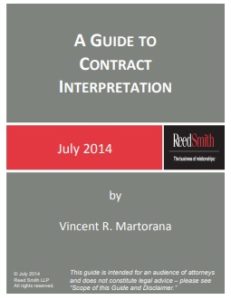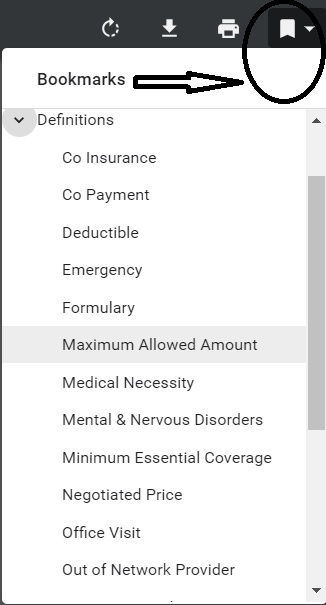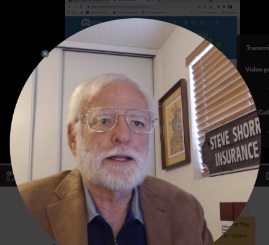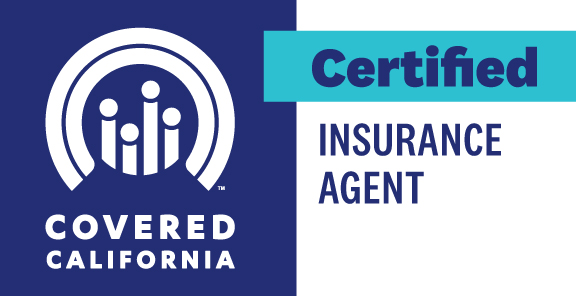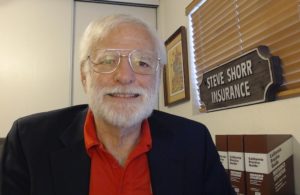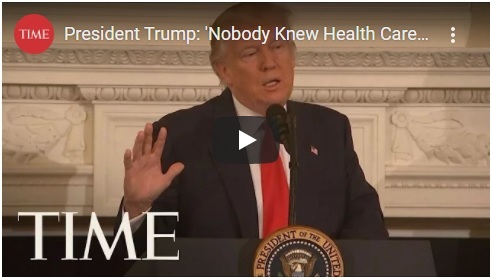Policy – Evidence of Coverage
The EOC Evidence of Coverage is the CONTRACT #between you and the Insurance Company

Every policy has a written Evidence of Coverage (EOC). The EOC is your guide to what is covered and what is excluded, how much you will pay depending on the circumstances, what your cost sharing will be, and other information about using your coverage. Keep this document handy for when you have questions about your policy. Insurance.CA.Gov *
Introduction to EOC Evidence of Coverage
So many questions are answered right in the Full Policy the evidence of coverage – EOC, in
- PLAIN English, as mandated by law.
- Along with your duty to read the policy!
Sure beats reading the law and then trying to see for sure if the law applies to you. When you have your actual EOC, a couple of easy ways to find stuff in the policy is the bookmarks, table of contents and the search feature.
The Evidence of Coverage (EOC) is a document that describes in detail the health care benefits covered by the health plan. It provides documentation of what that plan covers and how it works, including how much you pay. The EOC can also refer to a certificate or contract provided to a health plan member that contains information about coverage and other rights. National Disability Rights *
Here’s where to find your EOC Evidence of Coverage for:
- Individual & Family Plans
- Employer Group Plans
- Medi-Cal
- Medicare Advantage Co Ordination Plan –
- Email us if you are in CA and have any questions.
Must #read your policy
A court “must hold the insured bound by clear and conspicuous provisions in the policy even if evidence suggests that the insured did not read or understand them.”
- property casualty 360.com/is-there-a-duty-to-read-insurance-contracts
- IRMI duty to read
- Is there a duty to read? Hastings College of Law
- Fordham Law Review Duty to read a changing concept 1974
- Kenny & Sams Law Firm
(NASE’s prior Carrier, as pointed out by UICI’s to Steve Shorr personally 4/6/2006 letter) This case shows that one must read the ACTUAL policy and can’t rely on Agent’s statements or brochures. There are some exceptions… This doesn’t just apply to NASE, but to ANY Insurance Contract. See attorney Keler.com for more explanation.
Plain Language – Read Policy THREE times
Specimen Individual Policy #EOC with Definitions
Employer Group Sample Policy
It's often so much easier and simpler to just read your Evidence of Coverage EOC-policy, then look all over for the codes, laws, regulations etc! Plus, EOC's are mandated to be written in PLAIN ENGLISH!
- Find your own Individual EOC Evidence of Coverage
- It' important to use YOUR EOC not just stuff in general!
- Obligation to READ your EOC
- Plain Meaning Rule - Plain Writing Act
- Our Webpage on Evidence of Coverage
- OOP Out of Pocket Maximum - Many definitions are explained there.
VIDEO Steve Explains how to read EOC
All our Health plans are Guaranteed Issue with No Pre X Clause
Quote & Subsidy #Calculation
There is No charge for our complementary services, we are paid by the Insurance Company.
- We are authorized Brokers for Dental, Vision & Covered CA get instant quotes direct and in Covered CA with subsidy calculation for:
Watch our 10 minute VIDEO
that explains everything about getting a quote
-
- Our Quote Engine Takes all the complexity out of using pencil and paper to figure out the premiums per the Obamacare/ACA rules under CFR §1.36B-3 *
Plain English – How to read an Insurance Policy – EOC Evidence of Coverage
Guide to #Contract Interpretation
#Plain Meaning Rule
How to read a policy
How to read and figure out the law or Insurance Policy Provisions - Evidence of Coverage
- Read the Statute – Policy
- Read the Statute – Policy
- Read the Statute – Policy
- Then when you think you understand it, read it again
-
-
- Then as my cousin reminded me - one needs to check Westlaw, Google or the Talmud to see how the courts have interpreted the law, their might be some jiggery pokery - malarky going on.
- Check your Insurance Company Evidence of Coverage EOC one big advantage of the EOC is that it's in Plain English.
- Scroll down for more...
- Felix Frankfurther – Wikipedia

-
-
- Then when you think you understand it, read it again
- Tools to Read a Statute VIDEO
- Contract Interpretation in California: Plain Meaning, Parol Evidence and Use of the Just Result Principle
- How Will Making English the Official Language of the U.S. Affect Patients with Limited English Proficiency? Commonwealth Fund 12/4/2025
-
More on How to read a contract - Insurance Policy
-
The language of the text of the statute or Evidence of Coverage EOC should serve as the starting point for any inquiry into its meaning. To properly understand and interpret a statute, [first] you must read the text closely, keeping in mind that your initial understanding of the text may not be the only plausible interpretation of the statute or even the correct one, per Justice Felix Frankfurter . Guide to Reading & Interpreting * American Society of Healthcare Risk Management and * Wikipedia.
-
The starting point in statutory construction is the language of the statute - Evidence of Coverage itself. The Supreme Court often recites the “plain meaning rule,” as in, King vs Burwell Subsidies in Health Care.Gov upheld, that, if the language of the statute is clear, there is no need to look outside the statute to its legislative history in order to ascertain the statute’s meaning.
-
Parol Evidence Rule Wikipedia - Contract stands by itself - can't bring up discussions or agreements that were prior to actually signing the written Contract
-
The plain meaning of the contract will be followed where the words used—whether written or oral—have a clear and unambiguous meaning. Words are given their ordinary meaning; technical terms are given their technical meaning; and local, cultural, or Trade Usage of terms are recognized as applicable. The circumstances surrounding the formation of the contract are also admissible to aid in the interpretation. West’s Encyclopedia of American Law,
-
A cardinal rule of construction is that a statute should be read as a
Harmonious Whole,
with its various parts being interpreted within their broader statutory context in a manner that furthers statutory purposes. A provision that may seem ambiguous in isolation is often clarified by the remainder of the statutory scheme — because the same terminology is used elsewhere in a context that makes its meaning clear, or because only one of the permissible meanings produces a substantive effect that is compatible with the rest of the law.”
-
In Edgar v. MITE Corp., 457 U.S. 624 (1982), the Supreme Court ruled: “A state statute is void to the extent that it actually conflicts with a valid Federal statute.” In effect, this means that a State law will be found to violate the supremacy clause when either of the following two conditions (or both) exist:[3]
- Compliance with both the Federal and State laws is impossible, or
- “…state law stands as an obstacle to the accomplishment and execution of the full purposes and objectives of Congress…”
Supreme Court - FINAL Ruling - Plain Meaning - No Jiggery Pokery 47 Pages, view our highlights, annotations & bookmarks
Our webpage on
- jiggery pokery and contract interpretation
- Evidence of Coverage EOC
- Plain Meaning Rule - How to read Policy - Contract
Jump to section on:
|
Fool & their Folly
|
Plain language makes it easier for the public to read, understand, and use government communications.
- Modern insurance policies, as a result of state statutes, are required to be written in plain language or easy to read language sufficient for anyone with a fourth-grade education can understand. “Sesame Street English.” Merlin Law Group
- The Plain Writing Act of 2010 was signed on October 13, 2010. The law requires that federal agencies use clear government communication that the public can understand and use.
- While the Act does not cover regulations, three separate Executive Orders emphasize the need for plain language: E.O. 12866, E.O. 12988, and E.O. 13563.
- plain language.gov/law/
- Training Videos
- plain language.gov/guidelines/
- California Globe – Plain English
- CA Government Code 11340 – 11342.4
- Contra proferentem is a rule of contract interpretation that states an ambiguous contract term should be construed against the drafter of the contract. The term contra proferentem is derived from a Latin phrase meaning “against the offeror.”Contra proferentem has become increasingly important with the rise of contracts of adhesion. Contracts of adhesion involve pre-written contracts which are offered on a strict take-it or leave-it basis, leaving no opportunity for a party to bargain over specific contractual terms. Because the party does not have an opportunity to negotiate, they may reasonably interpret a term in a different manner than the contract offeror intended. Contra proferentem exists to place the burden of ambiguity on the party most capable of mitigating that ambiguity – the person who wrote it.
-
The doctrine of contra proferentem is also especially important in the field of insurance law due to the generalized nature of many of its terms. For example, it may be unclear if a policy that covers “water damage” will cover damage caused by a rainstorm induced mudslide. The doctrine of contra proferentem encouraged insurance providers to create enumerated lists of events that are excluded under a given policy, ultimately increasing clarity for insurance purchasers. Source Cornell Law *
- Health insurance illiteracy costs employees, study finds Despite spending more than $1 trillion on health insurance each year, many U.S. consumers are making poorly informed decisions – and paying for their lack of understanding.
Jiggery Pokery
King v Burwell – Subsidies Upheld – ScotusCare –
Plain Meaning Rule – Interpretive Jiggery Pokery
Slip Opinion
The
doctrine of privity in contract law
provides that a contract cannot confer rights or impose obligations arising under it on any person or agent except the parties to it.
The premise is that only parties to contracts should be able to sue to enforce their rights or claim damages as such. However, the doctrine has proven problematic due to its implications upon contracts made for the benefit of third parties who are unable to enforce the obligations of the contracting parties. en.wikipedia.org
In tort law, a duty of care is a legal obligation imposed on an individual requiring that they adhere to a standard of reasonable care while performing any acts that could foreseeably harm others. It is the first element that must be established to proceed with an action in negligence. The plaintiff must be able to show a duty of care imposed by law which the defendant has breached. In turn, breaching a duty may subject an individual to liability in tort. The duty of care may be imposed by operation of law between individuals with no current direct relationship (familial or contractual or otherwise), but eventually become related in some manner, as defined by common law (meaning case law). wikipedia.org/
Elements
| the foreseeability of harm to the injured party; |
| the degree of certainty he or she suffered injury; |
| the closeness of the connection between the defendant’s conduct and the injury suffered; |
| the moral blame attached to the defendant’s conduct; |
| the policy of preventing future harm; |
| the extent of the burden to the defendant and the consequences to the community of imposing a duty of care with resulting liability for breach; |
| and the availability, cost, and prevalence of insurance for the risk involved.[6] |
| the social utility of the defendant’s conduct from which the injury arose.[7]wikipedia.org/ |
Health Insurance unfortunately is very complicated
President Trump February 27, 2017
- Thus, if we haven't simplified and explained in PLAIN ENGLISH what you are looking for:
#Insubuy Travel Health Insurance
Instant Quotes, Details and ONLINE Enrollment
Steve talks about International Travel Insurance VIDEO
US State Department - Travel - Insurance
Our webpage on Travel Insurance
Testimonials & Accolades
Thank you so much for your assist in navigating this complicated insurance process.
I feel so lucky to find you!
I would like to contact you if I have any questions in the future because you are the only one who can give me a clear answer in this field.
I really, really appreciate you. 🙏
Julie L
Read our other clients testimonials and/or write one
Resources & Links
- Wikipedia
- Our webpage on mandated privacy notices – scroll down to section on writing in plain English.
- California Civil Code 1635 et seq – Interpretation of Contracts
- Caminetti_v._United_States
- Thomas v Quintero
- Must read policy or you can’t complain it wasn’t what you expected.
30 Day Free Look
Free Look Period #view FULL Policy – E O C (Evidence of Coverage) when you purchase Health Insurance and full return privileges’
California Insurance Code §10276.
Every individual accident and health policy or contract, except single premium nonrenewable policies or contracts, issued for delivery in this state on or after July 1, 1962, by an insurance company, nonprofit hospital service plan or medical service corporation, shall have printed thereon or attached thereto a notice stating that the person to whom the policy or contract is issued shall be permitted to return the policy or contract after its delivery to the purchaser and to have the premium paid refunded if, after examination of the policy or contract, the purchaser is not satisfied with it for any reason.
The period time set forth by the insurer, nonprofit hospital service plan or medical service corporation for return of the policy or contract shall be clearly stated on the notice and such period shall not be less than 10 days nor more than 30 days. The policyholder or purchaser may return the policy or contract to the insurer, plan or corporation at any time during the period specified in the notice. If a policyholder or purchaser pursuant to such notice, returns the policy or contract to the company or association at its home or branch office or to the agent through whom it was purchased, it shall be void from the beginning and the parties shall be in the same position as if no policy or contract had been issued. California Insurance Code §10276.
Check your evidence of coverage for the exact provisions!
Covered CA has a different Opinion. IMHO they are in violation of law!
See § 155.430 * Termination of Exchange enrollment or coverage
(b)Termination events –
(1)Enrollee-initiated terminations.
(i) The Exchange must permit an enrollee to terminate his or her coverage or enrollment in a QHP through the Exchange, including as a result of the enrollee obtaining other minimum essential coverage. To the extent the enrollee has the right to terminate the coverage under applicable State laws, including “free look” cancellation laws, the enrollee may do so, in accordance with such laws.
